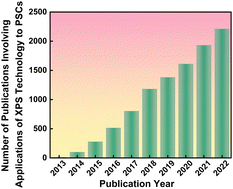Lessons learned: how to report XPS data incorrectly about lead-halide perovskites
Abstract
X-Ray photoelectron spectroscopy is a powerful tool for identifying the interactions of additives or surface treatments with components in lead halide perovskites. However, with the increasing number of studies using XPS, inaccurate or faulty data analysis has been encountered during a literature survey. Herein, we describe the fundamental principle of chemical shifts of Pb atoms in XPS and critically review the commonly seen mistakes in the literature: (i) misinterpretation of the XPS mechanism; (ii) misinterpretations due to disturbed chemical environments; (iii) lack of awareness of the properties of the passivator; iv. misquoted references. We hope that this perspective can help the community avoid the pitfalls in applying the XPS technique and in explaining their experimental results.

- This article is part of the themed collections: FOCUS: Perovskite Materials and Devices, 2023 Materials Chemistry Frontiers Review-type Articles and Materials Chemistry Frontiers Most Popular Articles 2023


 Please wait while we load your content...
Please wait while we load your content...